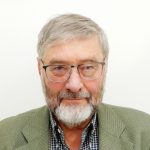
I spent about a decade in graduate research in Philosophy of AI under Turing scholar B. Jack Copeland at the University of Canterbury, New Zealand, and two decades independently investigating AI theory. In part, I was interested in the data compression properties of knowledge structures (US patents 5,748,955 and 6,414,610). The first patent, filed 1993, describes basic algorithms underpinning unsupervised LLM tokenization, in data compression terminology, the extraction of redundancy from undelimited bit streams.
Before that, I wrote the first New Zealand commercial tax program to receive government approval. Then a large accounting-warehousing-manufacturing application, and licensed this to a US multinational for two decades. The annual license fees provided funding for the independent AI research.
During research at the University of Canterbury I rejected Turing's computational theory of mind. I also rejected his computational theory of the computer. I understood the device not with concepts of computation but rather with concepts of the physics and chemistry of the science of electronics. The idea of symbol manipulation was not used, but rather the ideas of the manipulation of clocked current and of semiconductor storage.
Turing claimed that the (so-called) computer is a "practical version" of his universal Turing machine. I rejected this on the semantic ground that the two machines had a significantly different semantics. This difference is relevant to Searle's Chinese room argument which wrongly assumes computers are Turing machines. In short, Searle's argument is an indictment of some machine, just not the one AI uses for research and development.
In the late 1970s, I received a BA (Philosophy, Economics) and a BSc (Geology) from the University of Canterbury. I received an MSc in Philosophy of AI from the University of Canterbury. This course had problems ending in litigation which I can explain if needed.